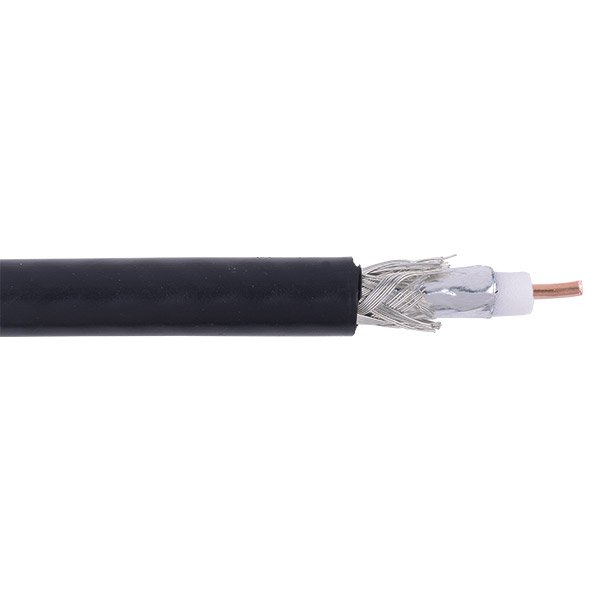Problem: Overwhelmed by the different types of cables? Agitation: You’re looking for a reliable way to transmit signals, but coaxial cables seem complex. Solution: This guide breaks down coaxial cables, explaining their purpose, types, and how to choose the right one.
A coaxial cable is a type of electrical cable that transmits high-frequency signals with minimal loss. It consists of a central conductor surrounded by an insulating layer, which is then encased in a conductive shield, all wrapped in an outer protective jacket. This design minimizes signal loss and interference, making it ideal for applications like cable television, internet, and connecting radio transmitters and receivers.
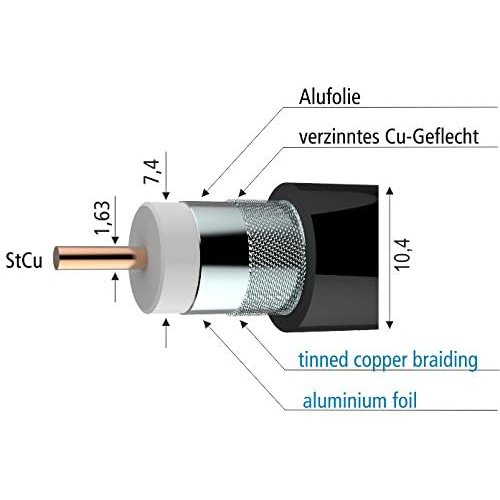
Coaxial cables are all about protecting the signal. They’re designed to keep the noise out and the signal strong. Let’s go into the specifics.
What are the different coax cables?
Problem: You know you need a coaxial cable, but which one? Agitation: There’s RG-6, RG-59, and more. What do these numbers even mean? Solution: Understanding the different types of coaxial cables and their specific applications will help you make the right choice for your needs.
Different coaxial cables vary primarily in their shielding, impedance, and signal loss characteristics, making them suitable for different applications. Common types include RG-6 (used for cable TV and internet), RG-59 (older, for low-frequency applications), and RG-11 (for long-distance runs). The "RG" designation stands for "Radio Grade," but the numbers differentiate their specifications.
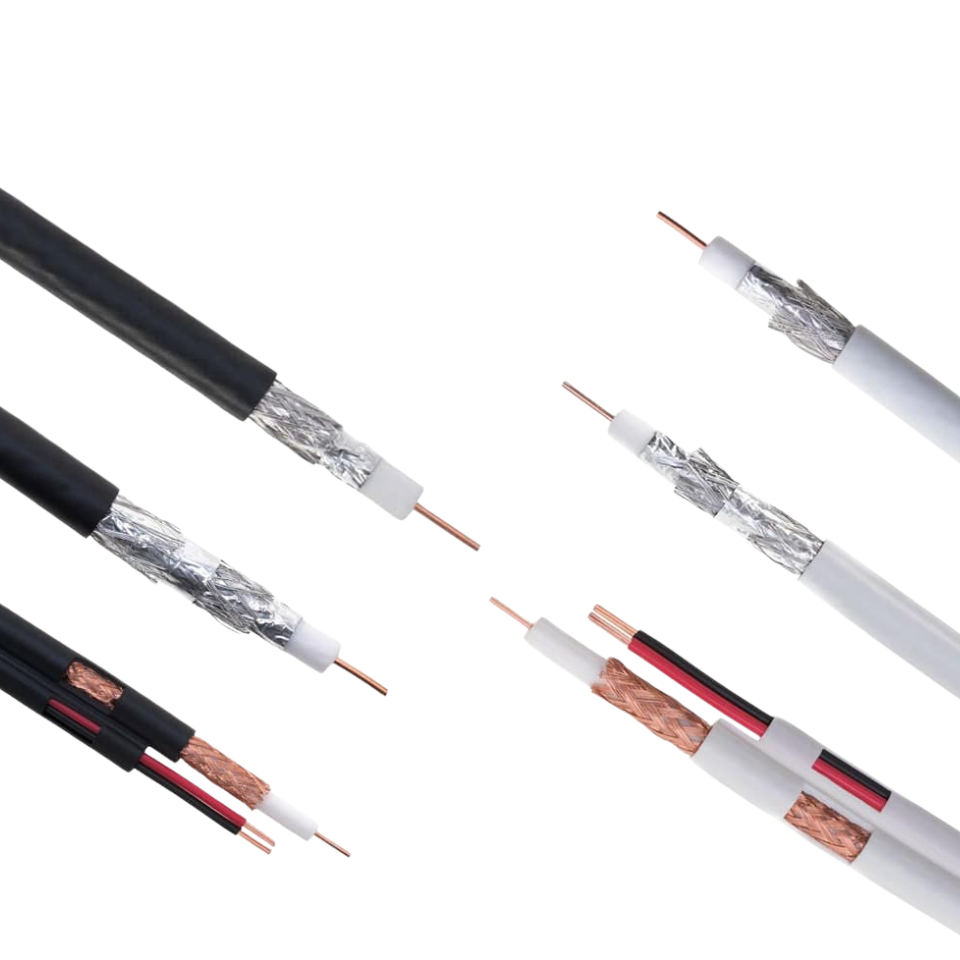
I can tell you from years of experience, that choosing the right coax cable is crucial to getting the best performance. Each type is designed for specific applications. Here’s a breakdown of some common types I’ve worked with:
- RG-6[1]: This is the most common type for modern residential and commercial installations. It has better shielding than RG-59, which reduces signal leakage and interference. It’s ideal for connecting cable TV, satellite TV, and internet modems. RG-6 cables typically have a 75-ohm impedance.
- RG-59[2]: This is an older type of coaxial cable that’s less common in modern installations. It has higher signal loss than RG-6, making it less suitable for high-frequency applications and long cable runs. It’s sometimes used for older CCTV systems or connecting composite video signals. RG-59 cables also have a 75-ohm impedance.
- RG-11[3]: This type of coaxial cable has the lowest signal loss, making it ideal for long-distance runs. It’s often used for the main feed line from the street to a building or for long runs within a building. RG-11 cables are thicker and less flexible than RG-6 cables, and they require specialized connectors. They also have a 75-ohm impedance.
- RG-58[4]: This is a thinner, more flexible coaxial cable often used for low-power radio frequency (RF) connections, such as connecting amateur radio equipment or older Ethernet networks (Thinnet).
- LMR Cables[5]: These are a series of low-loss coaxial cables designed for demanding wireless applications. They use a different construction than traditional RG cables and offer significantly lower signal loss at higher frequencies. They’re often used for connecting antennas to wireless routers, cellular boosters, and other wireless devices.
When selecting the right coaxial cable, I always consider the frequency of the signal being transmitted, the length of the cable run, and the environment in which the cable will be installed. I’d also suggest checking the cable jacket material, shielding effectiveness, and connector type to ensure it meets the specific requirements of your application.
What are the Best Coaxial Cables with High Quality?
Problem: You want the best possible signal quality. Agitation: With so many brands claiming to be the best, how do you separate hype from reality? Solution: High-quality coaxial cables use superior materials and construction to minimize signal loss and interference, ensuring optimal performance.
The best coaxial cables with high quality typically feature solid copper conductors, multiple layers of shielding (aluminum foil and braided copper), and a durable, weather-resistant jacket. Reputable brands often provide detailed specifications and certifications to ensure consistent performance and reliability.
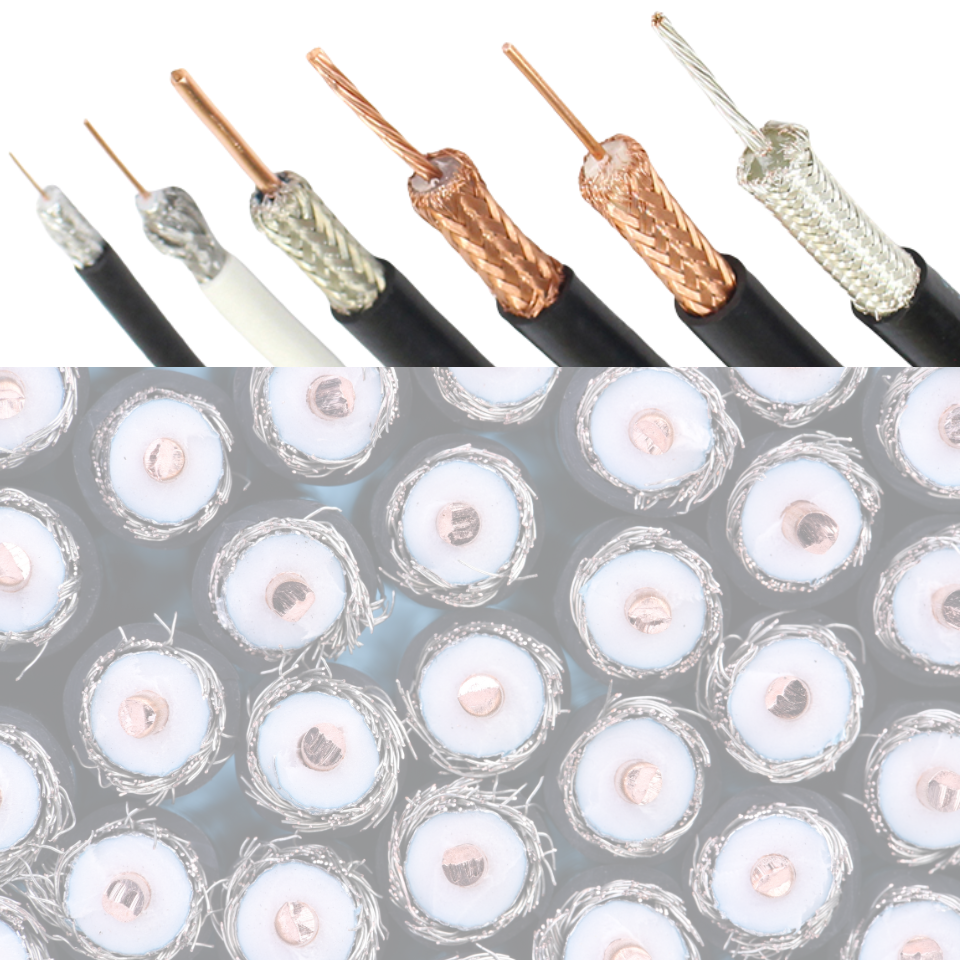
Beyond specific brands, here’s what I look for when sourcing high-quality coaxial cables:
- Conductor Material[6]: A solid copper conductor is ideal because it offers the best conductivity. Copper-clad steel (CCS) conductors are less expensive but have higher signal loss, especially at higher frequencies. Silver-plated copper conductors are even better than solid copper for high-frequency applications.
- Shielding: High-quality coaxial cables typically have multiple layers of shielding[7] to minimize signal leakage and interference. A minimum of two layers is recommended: a foil shield and a braided shield. The braid should have a high coverage percentage (typically 90% or higher) to ensure effective shielding.
- Jacket Material[8]: The jacket material should be durable and resistant to environmental factors such as UV radiation, moisture, and abrasion. Polyethylene (PE) and polyvinyl chloride (PVC) are common jacket materials. PE is more resistant to moisture and UV radiation, while PVC is more flexible.
- Connectors: High-quality connectors are essential for minimizing signal loss and ensuring a reliable connection. Look for connectors that are made from corrosion-resistant materials, such as brass or stainless steel, and that have a secure locking mechanism.
- Certifications: Certifications from reputable organizations, such as UL (Underwriters Laboratories) or ETL (Electrical Testing Laboratories), indicate that the cable has been tested and meets industry standards for safety and performance.
I advise my clients to review the cable’s specifications carefully. Look for a low attenuation (signal loss) rating, a high shielding effectiveness rating, and a wide operating frequency range.
What is the cost of a coaxial cable?
Problem: You need to budget for your project. Agitation: Coaxial cable prices vary widely, and you’re not sure what’s a fair price. Solution: The cost of a coaxial cable[9] depends on its type, length, materials, and brand.
The cost of a coaxial cable varies widely depending on its type (RG-6, RG-59, RG-11), length, quality of materials (copper vs. copper-clad steel), and brand. Generally, you can expect to pay anywhere from a few cents to several dollars per foot.
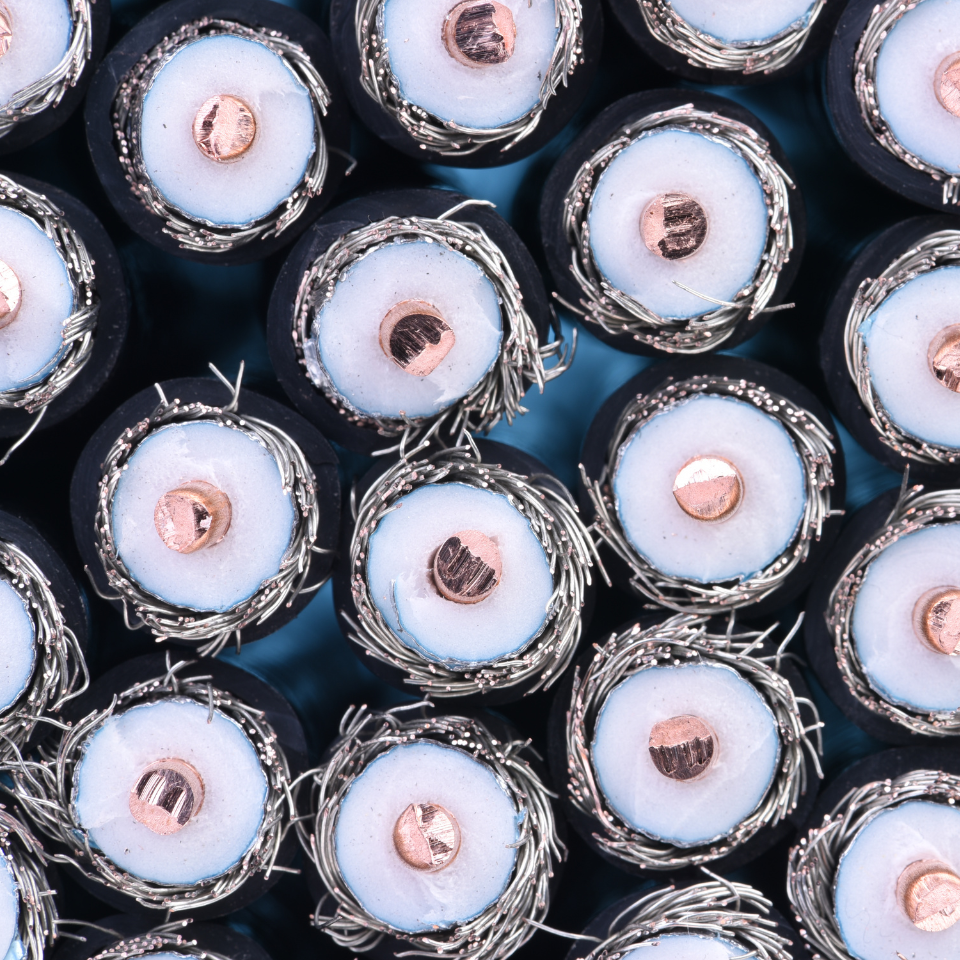
In the current market, there is a fluctuation of prices, but this is a reference. Here’s a general idea of what you can expect to pay:
- RG-6: For basic RG-6 cable with a copper-clad steel conductor and dual shielding, you can expect to pay around $0.10 to $0.30 per foot. High-quality RG-6 cable with a solid copper conductor and triple or quad shielding can cost $0.50 to $1.00 per foot or more.
- RG-59: RG-59 cable is typically less expensive than RG-6, with prices ranging from $0.05 to $0.20 per foot. However, due to its lower performance, it’s generally not recommended for new installations.
- RG-11: RG-11 cable is more expensive than RG-6 due to its larger size and lower signal loss. Prices typically range from $0.50 to $2.00 per foot.
- LMR Cables: LMR cables are specialty cables designed for low loss and can be considerably more expensive, ranging from $1 to $5 or more per foot, depending on the specific type and performance characteristics.
The bulk prices are very different compared to the retail price. Bulk purchases often offer significant discounts. Also be aware of the connectors. High-quality connectors can add to the overall cost.
How does a coaxial cable reduce interference?
Problem: Interference can ruin a signal. Agitation: How do coaxial cables protect against this? Solution: Coaxial cables are designed with a conductive shield that blocks electromagnetic interference, ensuring a clean signal transmission.
A coaxial cable reduces interference through its unique construction, which includes a central conductor surrounded by an insulator and a conductive shield. The shield, typically made of braided copper or aluminum foil, acts as a barrier against electromagnetic interference (EMI)[10] from external sources, preventing it from affecting the signal transmitted through the central conductor.
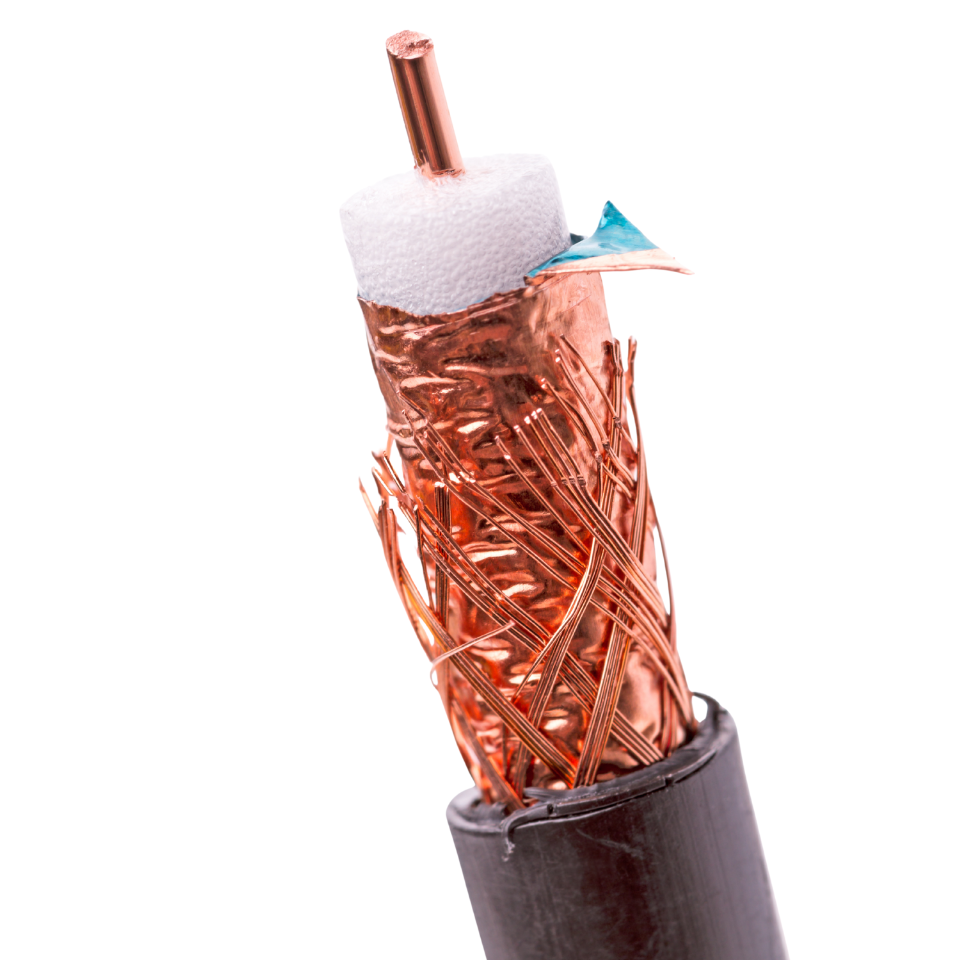
I explain the concept in terms of protective layers. The conductive shield[11] forms a Faraday cage around the central conductor, blocking external electromagnetic fields. This design also prevents the signal from radiating out of the cable, which could cause interference with other nearby devices.
Here are some key ways coaxial cables reduce interference:
- Shielding: The conductive shield is the primary mechanism for reducing interference. It blocks external electromagnetic fields from reaching the central conductor.
- Grounding: The shield is typically grounded, which provides a path for unwanted signals to dissipate, further reducing interference.
- Impedance Matching: Coaxial cables are designed with a specific impedance (typically 75 ohms for video and 50 ohms for data) to minimize signal reflections and standing waves, which can contribute to interference.
- Balanced Transmission: Coaxial cables use balanced transmission[12], where the signal is transmitted as a differential voltage between the inner conductor and the shield. This helps to cancel out common-mode noise, which is interference that affects both conductors equally.
Based on my experiences. For environments with strong interference (such as factories), triple shielding with aluminum foil + copper braid + outer conductive layer is used. For weaker interference (homes), double shielding is enough.
What is the future of coaxial cable in residential wiring?
Problem: With new technologies emerging, what’s the long-term outlook for coaxial cable? Agitation: Is it becoming obsolete? Solution: While facing competition from fiber optics and wireless technologies, coaxial cable still has a role in residential wiring, particularly for delivering broadband internet and cable TV services.
The future of coaxial cable in residential wiring is evolving. While fiber optic and wireless technologies are gaining ground, coaxial cable remains relevant for delivering broadband internet and cable TV due to its established infrastructure and cost-effectiveness. However, its role is likely to diminish over time as fiber becomes more widely deployed.
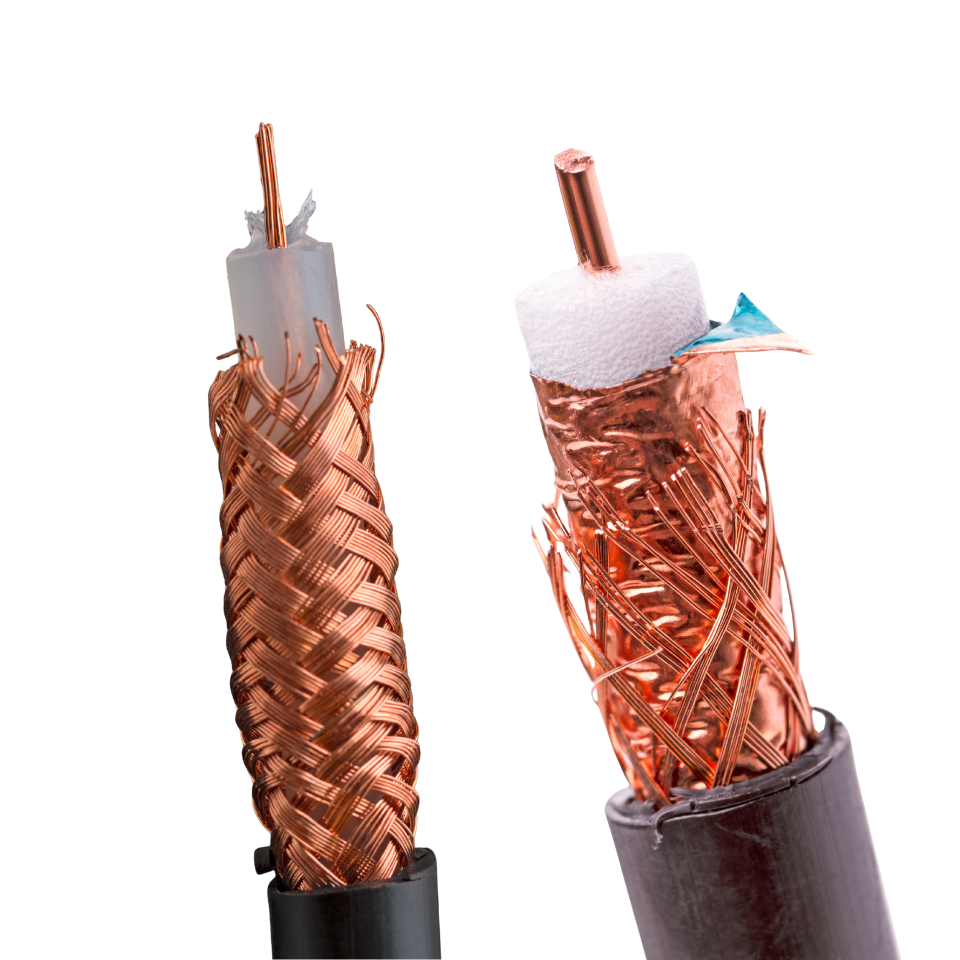
I think Coax isn’t going anywhere drastically soon, but it’s changing. Here’s my perspective:
- Existing Infrastructure[13]: Coaxial cable is already installed in a vast number of homes, making it a cost-effective solution for delivering broadband internet and cable TV services. Upgrading existing coaxial infrastructure is often less expensive than deploying new fiber optic networks.
- DOCSIS Technology[14]: DOCSIS (Data Over Cable Service Interface Specification) technology continues to evolve, allowing cable operators to deliver ever-increasing internet speeds over coaxial cables. The latest version, DOCSIS 4.0, promises to deliver multi-gigabit speeds, competing with fiber optic services.
- Competition from Fiber[15]: Fiber optic cables offer significantly higher bandwidth and lower latency than coaxial cables. As fiber optic networks become more widely deployed, they are increasingly replacing coaxial cables for internet and TV services.
- Wireless Technologies: Wireless technologies, such as 5G and Wi-Fi 6, are also competing with coaxial cables for delivering internet services. These technologies offer greater flexibility and mobility.
- Hybrid Approaches[16]: In some cases, cable operators are using hybrid approaches that combine fiber optic and coaxial cables. Fiber optic cables are used to deliver signals to a neighborhood, and then coaxial cables are used to distribute the signals to individual homes.
In the future, I envision coaxial cable continuing to play a role in residential wiring, but it’s impact will be less. Cable operators will likely continue to use coaxial cable for delivering broadband internet and cable TV services in areas where it’s cost-effective to do so. However, as fiber optic networks become more widespread, coaxial cable will gradually be replaced, especially in new construction.
Conclusion
Coaxial cables are essential for signal transmission, offering interference reduction and versatility. While facing competition, coaxial cable still plays a key role in existing residential networks.
[1]: Explore this link to understand the advantages of RG-6, its applications, and why it’s the go-to choice for modern installations.
[2]: Learn about RG-59’s characteristics and why it’s less suitable for high-frequency applications compared to newer cables.
[3]: Discover the benefits of RG-11, including its low signal loss and applications in long-distance installations.
[4]: Learn about RG-58’s unique features, applications, and how it differs from other coax cables to ensure you choose the right one for your needs.
[5]: Find out how LMR cables outperform traditional RG cables in wireless applications and their specific uses.
[6]: Learn why solid copper and silver-plated copper outperform other materials in coaxial cables, ensuring the best signal quality for your setup.
[7]: Learn how multiple layers of shielding can significantly reduce signal interference and enhance cable performance.
[8]: Learn which jacket materials offer the best protection against UV, moisture, and abrasion to ensure your coaxial cables last longer and perform reliably.
[9]: Understanding the average price of coaxial cable can help you budget effectively for your project.
[10]: Exploring EMI will help you grasp the challenges in signal transmission and the importance of coaxial cables in mitigating these issues.
[11]: Understanding the role of a conductive shield can enhance your knowledge of how coaxial cables protect signals from interference.
[12]: Discovering balanced transmission will deepen your understanding of how coaxial cables effectively cancel out noise and improve signal quality.
[13]: Understanding the significance of existing infrastructure can help you see why coaxial cable remains a viable option for many homes.
[14]: Exploring DOCSIS technology will reveal how it enhances coaxial cable performance, making it competitive with newer technologies.
[15]: Learning about fiber’s advantages will provide insight into why coaxial cable’s role may diminish in the future.
[16]: Discovering hybrid approaches can show you how coaxial and fiber can work together, ensuring efficient service delivery.

